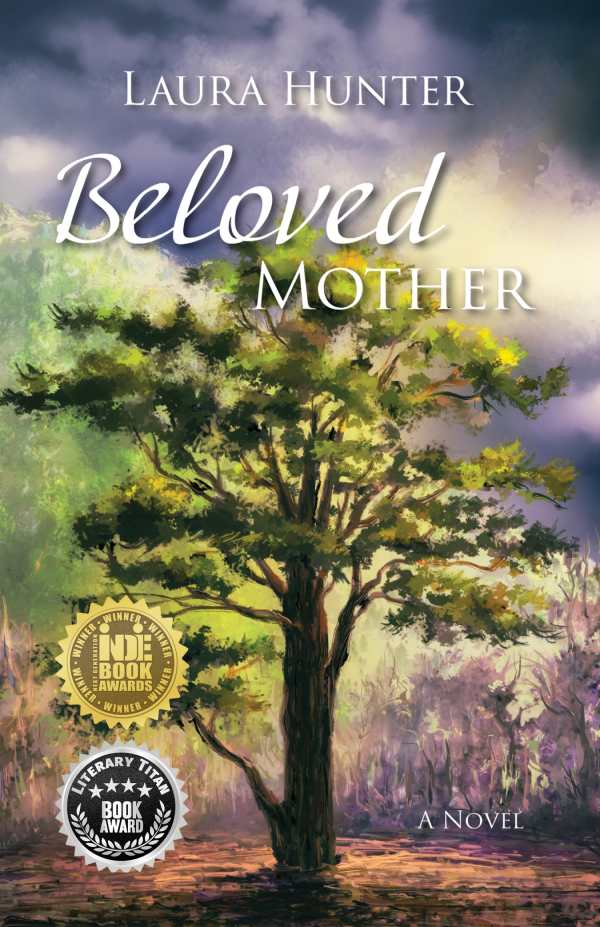
Beloved Mother
Hunter’s unforgettable historical novel focuses on the circumstances that warp some personalities and strengthen others.
Spirited and sorrowful, Laura Hunter’s Beloved Mother depicts the cruelties that shape generations in an Appalachian coal mining town.
Spanning from the 1920s to the 1960s, the book centers on three characters whose fortunes take severe turns. They are Mona Parsons, who, over her years, assumes additional identities, including that of Beloved Mother, a Cherokee herbalist and healer; her younger sister, Anna, a woman plagued by guilt; and Anna’s daughter, Lily, the first woman of her family to break free from the land that scars them all.
The complex plot begins in Mona’s youth. Brutalized by a drifter, she’s saved by a Cherokee man whose mother grooms Mona to become the tribe’s next Beloved Mother. Tragedy arrives before Mona can assume the role. She’s cast out, but she shapes herself into her own damaging version of a Beloved Mother, whose belief in her godlike powers ripples across decades.
In a stunning mixture of psychological horror and self-empowerment, the book examines Mona’s responses to early events and her impact on Anna and Lily. Chapters that feature Anna draw parallels between Mona’s rough entry to adulthood and Anna’s own experiences, which also include fleeing home and experiencing trauma. Lily’s birth and growth signal the beginning of an even harsher period, when Mona steps in to interfere with Anna’s life and mentors Lily to become her successor.
There’s little reprieve to the book’s stinging realism. Grim events include rape, abortion, mental disturbances, adultery, child abuse, and murders. Despite what happens, each character’s actions remain grounded. The women leads come across with deep acuity, their conflicting emotions and tangled motivations exposed. It becomes tough to assign blame when no one in the novel is without their faults.
Amid the bleakness of the mine town, which is evocatively described down to its animal life and weather, there’s enough light to push back despair. It arrives in the form of goodhearted characters, including Gabe, a shopkeeper who cares for Anna and Lily, and neighbors that aid each of the women at separate times.
It takes one character’s revenge plot to tilt the scales toward healing. The denouement fits with the book’s near-Gothic darkness, which is nowhere more evident than in Lily’s discovery of the town’s abortion room, replete with an Edwardian chair and fetal remains. As visceral as certain scenes become, the writing maintains a tight balance between imparting discomfort for the sake of building up the book’s mythical tones and presenting discomfort as a bold fact of human dramas.
Italicized interludes feature dialogues between the Great Spirit, Sister Sun, and Brother Moon who observe what happens on earth with varying degrees of curiosity, indifference, and concern. Whether they intervene or refrain, their gossip and personalities add levity. They reinforce the idea of greater beings with whom people can fall in and out of harmony. They turn distracting when national and world events creep in as reasons for Great Spirit to turn away.
Lily’s transformation into a young woman who learns how to save herself is a powerful repudiation of the past. For all the ruin that befalls Mona and Anna, the book ends on a hopeful note.
Hunter’s historical novel focuses on the circumstances that warp some personalities and strengthen others. Beloved Mother is an unforgettable look at Appalachia’s women.
Reviewed by
Karen Rigby
Disclosure: This article is not an endorsement, but a review. The publisher of this book provided free copies of the book and paid a small fee to have their book reviewed by a professional reviewer. Foreword Reviews and Clarion Reviews make no guarantee that the publisher will receive a positive review. Foreword Magazine, Inc. is disclosing this in accordance with the Federal Trade Commission’s 16 CFR, Part 255.
